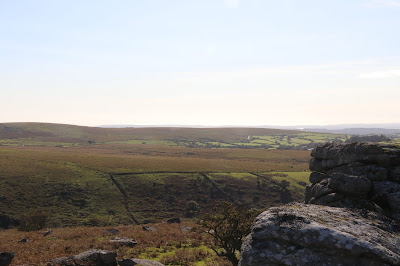 |
| On the way up to Down Tor and looking back towards Burrator. Autumn is definitely with us with leaves and bracken turning brown. |
 |
| Down Tor, our first target. |
 |
| Just a dead tree glistening in the afternoon sun. |
 |
| A rather fine old granite barn at Middleworth Farm. |
 |
| I knew what this was as soon as I saw it. People lighting campfires in and around the moor seems to be a particular problem this year and this was obviously an attempt to reseed one such spot. |

























































